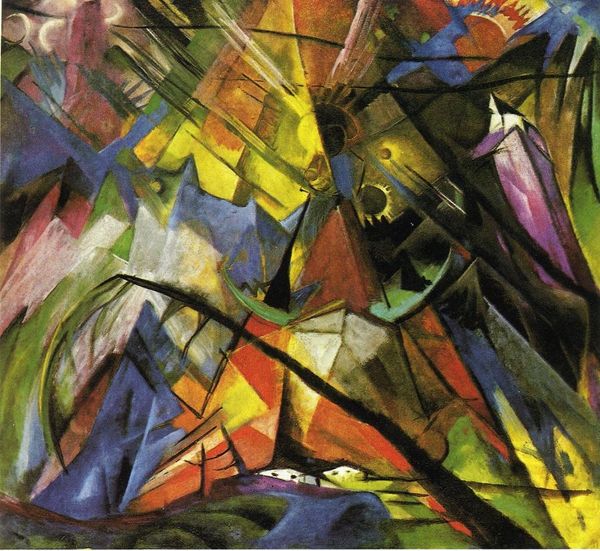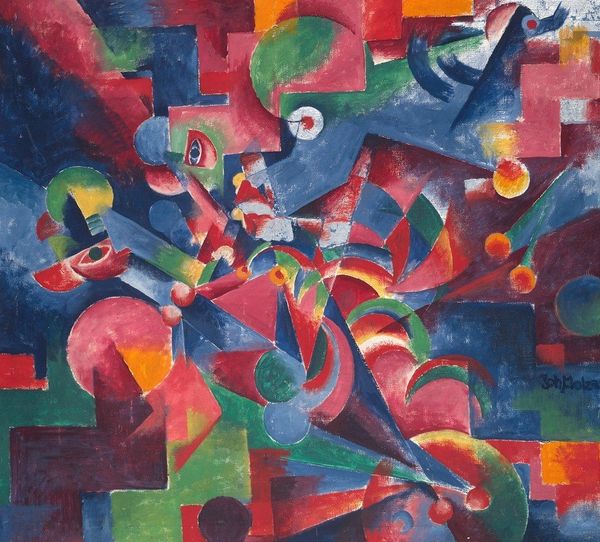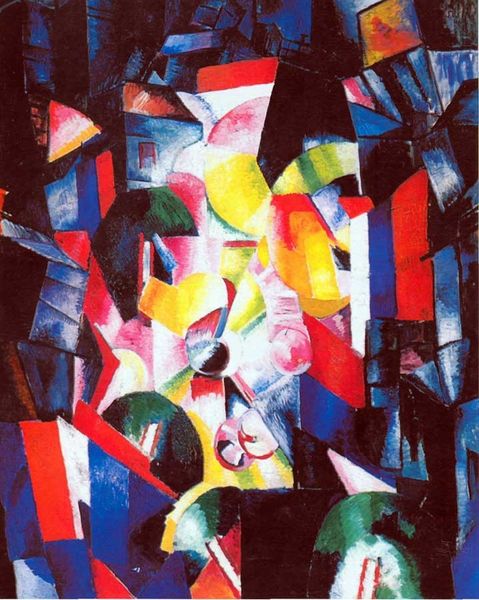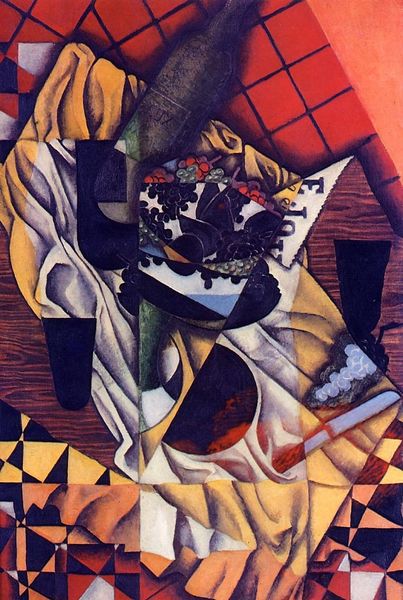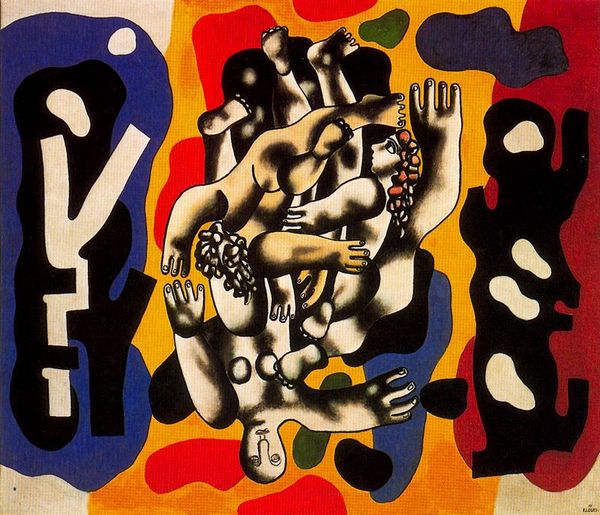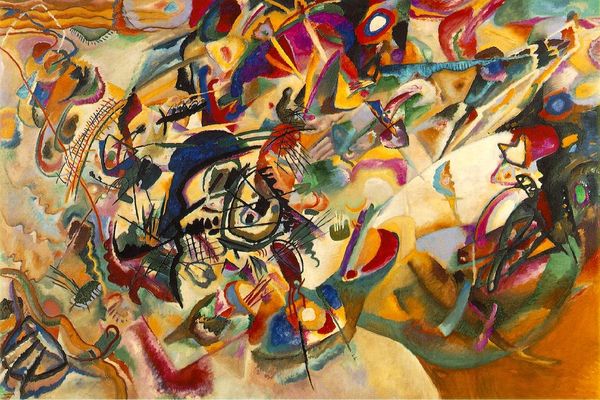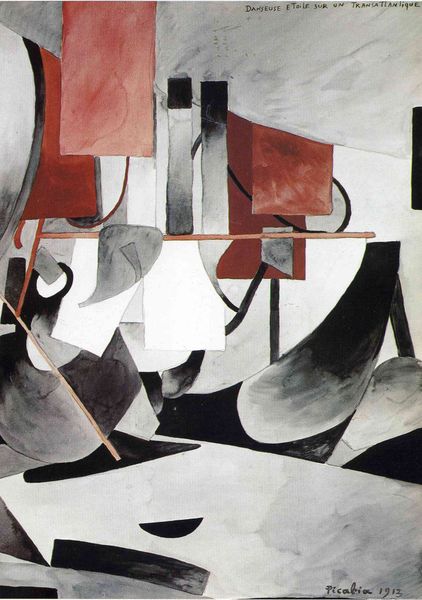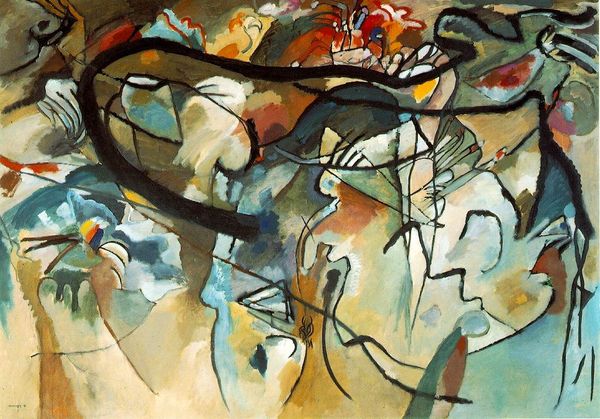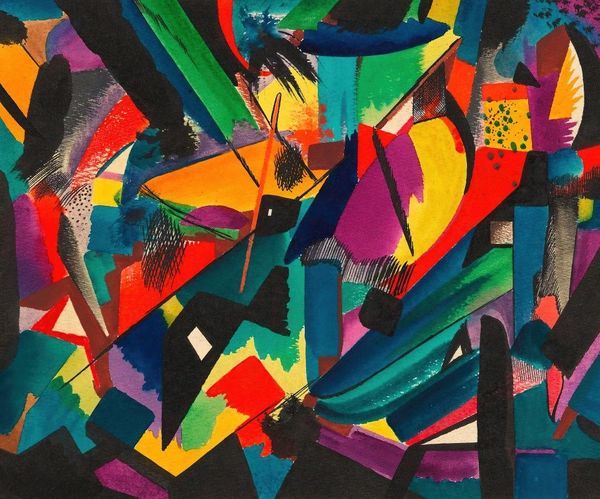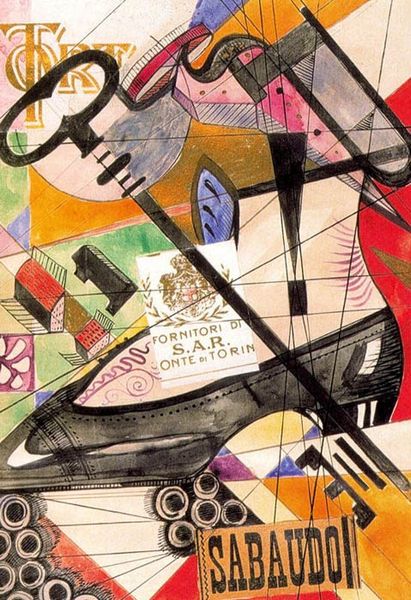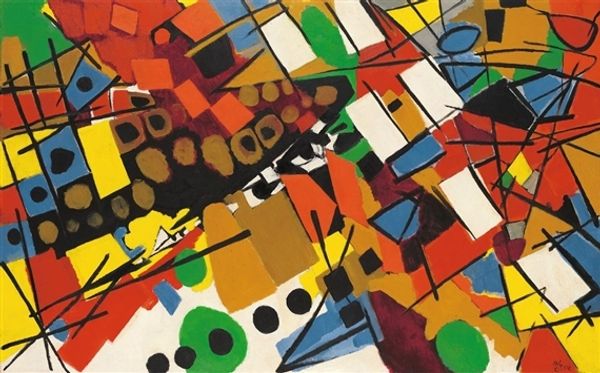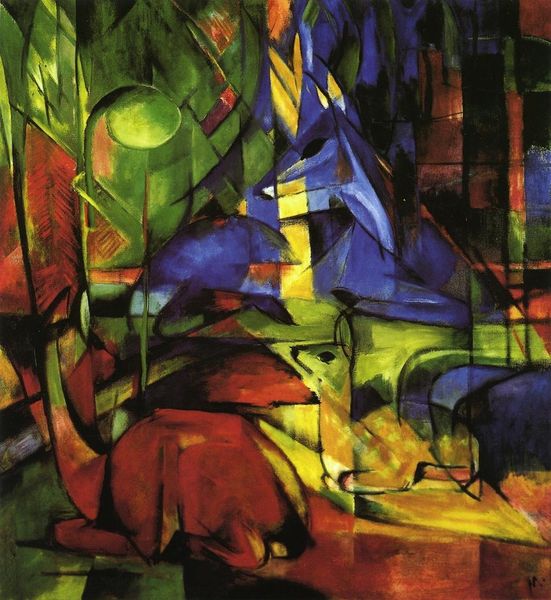
mixed-media, painting
#
cubism
#
mixed-media
#
painting
#
geometric
#
abstraction
#
orphism
Copyright: Public domain US
Curator: Here we have Francis Picabia’s “Edtaonisl (Ecclesiastic),” completed in 1913, an intriguing example of his foray into both Cubism and Orphism. Editor: My initial reaction is chaos, but a structured chaos, wouldn't you say? The clashing forms fight for attention, yet a compositional balance prevails. Curator: Precisely. The angular forms and fragmented planes are certainly reminiscent of Cubist principles. But notice the use of color—the vibrant oranges, purples, and yellows. This exploration of color relationships and light aligns it with Orphism. Editor: Yes, the colors create a pulsating rhythm. Given the title, I wonder what symbolic meanings lie within these shapes. What does this visual vocabulary tell us about the “Ecclesiastic”? Curator: It’s challenging. Perhaps the fractured forms reflect a questioning of traditional religious structures? The overlaid geometry denies a singular reading. There are even elements that echo Futurist concerns with machinery in the modern world, despite being rooted in religious iconography. Editor: Perhaps. The jumbled forms give the impression of the chaotic elements the religious figure is trying to harmonize. I'm also curious about that upper band of what seems to be sequential colors: black, gray, then brown; the transition makes me think about mortality, or rather the limited human condition. Curator: An insightful observation! One could even interpret it as the stages of enlightenment as sought through religious devotion, represented abstractly through chromatic progression. What stands out to me, formalistically, is the interplay between positive and negative space, it challenges our perspective. Editor: It feels representative of faith's impact. Picabia isn’t depicting an ecclesiastic, but instead visually conveying the emotional turmoil and potential for transformative thinking they oversee. A very 20th-century approach to a traditional theme! Curator: Yes, it's as if Picabia dissected the very essence of the Ecclesiastic—a compelling exercise in abstraction. It avoids conventional portraiture or landscape elements, directing the viewer to the core semiotics of its name and themes. Editor: An evocative combination of colors and geometric shapes certainly yields food for thought. This "Edtaonisl" remains enigmatic and potent even now!
Comments
No comments
Be the first to comment and join the conversation on the ultimate creative platform.
